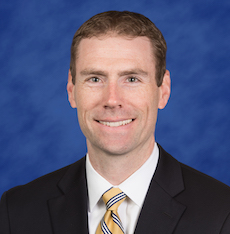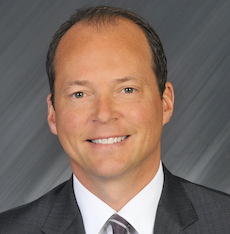
Jacob Lund - stock.adobe.com
Beyond COVID-19: Telehealth, Partnerships, Member Engagement
Payers have been on the frontline of COVID-19 response efforts, but now plan leaders are grappling with how to handle telehealth, partnership, and member engagement in a post-pandemic world.
While the coronavirus pandemic which gripped the nation in March 2020 is still in force, payers are beginning to look to the future as the nation emerges from crisis mode.
Many uncertainties still hang in the air regarding the trajectory of the pandemic and the long-term impacts it will inflict on the nation’s healthcare industry.
However, some key concepts and developments in the payer industry are already materializing as touchstones for the future.
“The major takeaway is that even beyond the theme of telehealth, the pandemic has required health care systems to develop new strategies and processes to accomplish our work, whether it's in the patient care arena or on the insurer side,” said James Schuster, MD, associate chief medical officer and senior vice president of medical and behavioral services for the University of Pittsburgh Medical Center (UPMC) Health Plan.
“Those lessons will help serve as well as we go forward in the future,” he told HealthPayerIntelligence.
And Schuster is not alone thinking that. Aetna, WellCare, and Blue Cross and Blue Shield of Tennessee (BCBST) are also grappling with how to move forward with new policies and flexibilities granted during the state of emergency and what member engagement will look like after the dust settles.
Reassessing the role of telehealth after coronavirus
With members on lockdown and largely unable to access in-person care, payers saw a dramatic increase in telehealth usage over the course of the pandemic. Some providers went from offeringno telehealth capabilities to conducting a majority of visits virtually in a matter of weeks.

With such dramatic increases in telehealth use, it became clear to BCBST early on in the pandemic that its telehealth benefits would be in high demand. Between mid-March and mid-April, BCBST’s telehealth claims increased to 18 times the amount from that period during the previous year. By May 2020, Alison Sexter, corporate communications specialist at BCBST, told HealthPayerIntelligence, the number of telehealth claims had skyrocketed to 50 times their normal amount.
Like many payers, BCBST has revisited its telehealth approach throughout the crisis, resulting in a gradual expansion of the original telehealth waivers. In March 2020, at the genesis of the pandemic, the payer started covering all in-network telehealth visits for primary care, specialist, and behavioral healthcare providers. Later, BCBST expanded its waiver to include applied behavioral analysis, occupational, physical, and speech therapies.
In May 2020, escalating member utilization of telehealth services drove BCBST to be the first payer to announce that it would make permanent its waivers for in-network telehealth visits. Member-to-provider, as well as provider-to-provider, telehealth visits are included in the permanent coverage.
“Having a telehealth option makes care more convenient for our members, which can foster better health.”
The payer also revealed that, ever since its in-network telehealth services became permanent, telehealth providers will receive the same reimbursement rates as in-person visits.
However, it was also telehealth’s proven quality and efficiency, not just consumer demand, that convinced BCBST to make the expanded telehealth coverage permanent.
“We’ve seen how well telehealth can work, especially for non-emergency health care,” Sexter confirmed. “Having a telehealth option makes care more convenient for our members, which can foster better health.”
BCBST indicated that they are not intending to make their other coronavirus policies permanent.
“We’ve chosen to waive member costs through the end of the national emergency because we believe it’s the right thing to do,” Sexter said.

While some payers redesigned their telehealth strategies, others found their telehealth offerings needed little adaptation for the pandemic.
For UPMC’s health plan, the coronavirus pandemic did not affect telehealth offerings very much since the organization already had a broad telehealth infrastructure in place. However, the crisis did evolve the health plan’s perspective on the role of telehealth.
“It's really made us think constructively about what services need to be delivered in person, what services can effectively be delivered via telehealth, and what kinds of combinations of virtual and in-person services could occur to maximize the efficacy of health care that individuals receive,” said Schuster.
Not only did it change the health plan’s perspective on telehealth, but it also allowed the health plan to influence members’ understanding of how they could utilize telehealth for their needs.
UPMC had an array of telehealth services available to members prior to the pandemic, including a telehealth urgent care option. But these tools were not being used to their full capacity. During the pandemic, telehealth urgent care utilization nearly leveled with in-person urgent care visits as members became more familiar with the option.
Aetna, Blue Cross Blue Shield of Tennessee, and UPMC all attested that they were pursuing parity between telehealth and in-person visits either prior to the pandemic or when they instituted their pandemic telehealth strategies. None of them indicated intentions to change those policies after the public health emergency lifted.
Regaining perspective on relationships and infrastructures
The pandemic has led to a plethora of new policies, but it has also forced payers to lean even more heavily on the relationships they had already forged with providers and government agencies.
From a Medicare Advantage perspective, Centene's Mike Polen, senior vice president and CEO of Medicare, was particularly appreciative of efforts by CMS to lift restrictions that allowed Medicare Advantage plans to provide extended benefits to seniors.
CMS rapidly expanded telehealth benefits and leniencies early on in the crisis, as it became apparent that telehealth would be the safest and primary form of care delivery. Certain aspects of telehealth benefits—specifically audio-only benefits and how Medicare Advantage plans will or will not count those toward risk adjustment—remain unsettled. But overall, Polen found the CMS coronavirus efforts to have had a positive impact.

Schuster likewise noted that UPMC had been communicating with provider, specialty agencies, and regulators. But in addition to these large entities, Schuster also found that efforts against the coronavirus underscored the value of each individual’s efforts in the company.
“It has reinforced for us the passion of our employees for doing the work and the importance of everybody who works within our system,” Schuster said. “Even if you don't have a lofty title, everyone's really important in terms of delivering the services that we want for patients and members. Everybody always realized that intellectually, but I think the pandemic has really brought that home in a very overt way.”
At Aetna, the pandemic was similarly a reminder of the critical role that its colleagues, or employees, play.
“One of the most important lessons so far has been that we must continue to have our colleagues be the face for our members and providers as we work through COVID-19,” Dan Finke, executive vice president of commercial business and markets at Aetna, said to HealthPayerIntelligence. “Supporting our colleagues during this time will continue to be paramount to adapting to this new environment.”
“It has reinforced for us the passion of our employees for doing the work and the importance of everybody who works within our system."
Payers also leaned into their structural strengths and differences. For example, UPMC was able to leverage its structure as a provider-owned payer to have a highly collaborative payer-provider coronavirus effort. Although non-UPMC providers contribute around half of the services rendered to UPMC members, Schuster found that the health plan’s provider ownership made the company very sensitive to provider concerns during the crisis.
The provider-owned structure also enabled the health plan to develop a robust telehealth infrastructure alongside UPMC Provider Services several years before the crisis. Telehealth usage had been modest up until the pandemic, but it was this infrastructure created in partnership with the UPMC providers that allowed the health plan to quickly scale up its telehealth services in response to COVID-19.
Transitioning members out of the pandemic
Aetna, BCBST, UPMC, and Centene's Medicare Advantage plan, WellCare, are projecting that most of the coronavirus-era waivers and benefits will come to an end. These projections may be subject to change. At present, any exceptions are largely telehealth-related.
Mostly, payers are looking to the government for indicators on when to lift coronavirus policies.
“As federal and state regulations are updated, we are continuing to update our benefits and programs to comply with these changes, while considering how best to use the flexibilities afforded to us to further help our members,” Finke explained.
UPMC will also be listening to provider and member feedback, particularly concerning their telehealth benefits, to guide their benefit deadlines, Schuster shared.
WellCare, which has extended most of its coronavirus benefits and policies through the end of the year, said that the payer chose to take a conservative approach in case of a second spike. Going forward, the payer will continue to watch coronavirus data trends to determine what the impact on members will be and listening to member feedback.

When the benefits end, the payers acknowledged, transitioning back to the realities of fewer waivers for services may be a rude awakening for members. Payers are implementing various strategies to aid the shift.
For UPMC, member engagement will look different moving forward as the system transitions out of crisis mode. As an organization that has incorporated a fair number of in-person events into its member engagement approach in the past, the payer will need to continue exploring new ways to interact with their members.
“A significant amount of our member engagement—certainly not all, by any means—but a significant amount was at in-person, community-based events. And we certainly miss having those and hope to resume them at some point,” Schuster shared. “But we have redoubled our efforts to engage with our members in other ways, especially electronically. And I think that that's, that's a strategy that will likely persist.”
Schuster added that the UPMC Center for High Value Health Care, which has been key to the payer’s social determinants of health strategy, will be instrumental moving forward in evaluating the impacts that changes in care delivery can have on members.
A couple of payers will be focusing on implementing the lessons they have learned about having a quick response and the ability to pivot.
“Our agility is something we’ve really built into our culture over the past decade,” Sexter said. “And we put these skills into action during the COVID-19 pandemic, making decisions rapidly to respond to the needs of our members and providers.”
Part of the coronavirus response included pivoting to a new work environment. Payers had to adapt to the “work from home” approach, a format which some see continuing in some fashion after the public health emergency lifts.
In the past, payer operations have largely taken place in an office environment. But, like many other industries, coronavirus uprooted health plan employees from their usual workflows.
"[W]e have redoubled our efforts to engage with our members in other ways, especially electronically. And I think that that's, that's a strategy that will likely persist.”
BCBST leadership kept only about four percent of their staff on site. When the payer opens up its offices again, more than half of its employees will continue telecommuting. Another 1,300 employees will officially start working from home full time this summer.
For WellCare, this shift meant that in just three days’ time 56,000 employees left their office setting to work from home. Payers had to adapt many of their usual functions to fit a remote workforce.
Polen explained that this change was more than just a workflow adjustment. It tested the payers’ ability to continue delivering high quality care in an uncertain environment, a skill that will continue to be necessary even as the lockdowns lift.
“We had to take our workforce and, and quickly move it to a remote working environment,” Polen noted. “Being able to do that while maintaining the appropriate service levels and not having a new disruption for our members and providers, that's pretty impressive. I could see that going forward the way that employees operate in their daily work environment may be a little bit different.”
Polen and others tentatively projected that the workforce may become a more permanent feature of the payer workplace. Leveraging the right technologies will play a role in that transition, Polen indicated.
While payers remain, on the whole, very hesitant to make projections about the future, some voiced a level of optimism.
“I'm very confident about the future of the healthcare industry,” Polen shared. "This is definitely an industry that can get a fair amount of criticism. But the reality is this is an unprecedented issue to have to deal with and I think, overall, the industry has been able to meet this difficult challenge. There really was no playbook on how to deal with a situation like this.”
Update 6/5/2020: A previous version of this article used the name "WellCare" throughout the article but this has been altered in some sections to demontrate the affiliation between Centene and WellCare.






